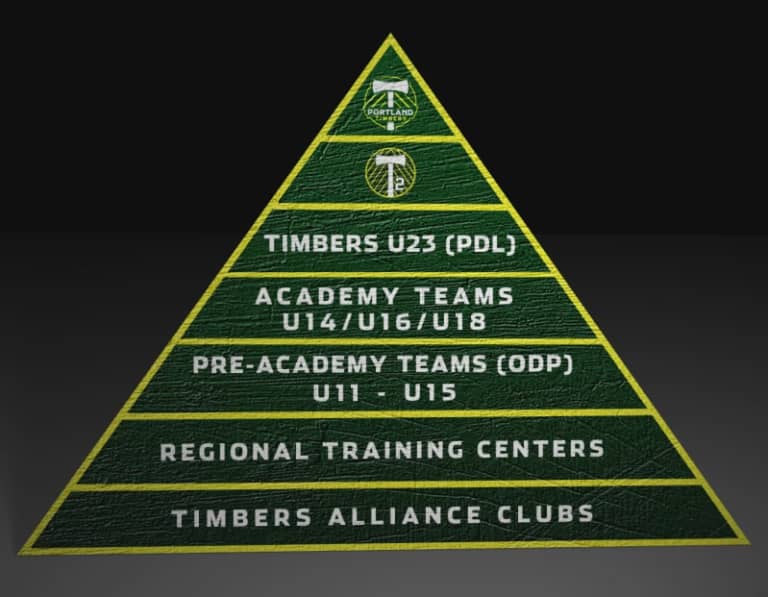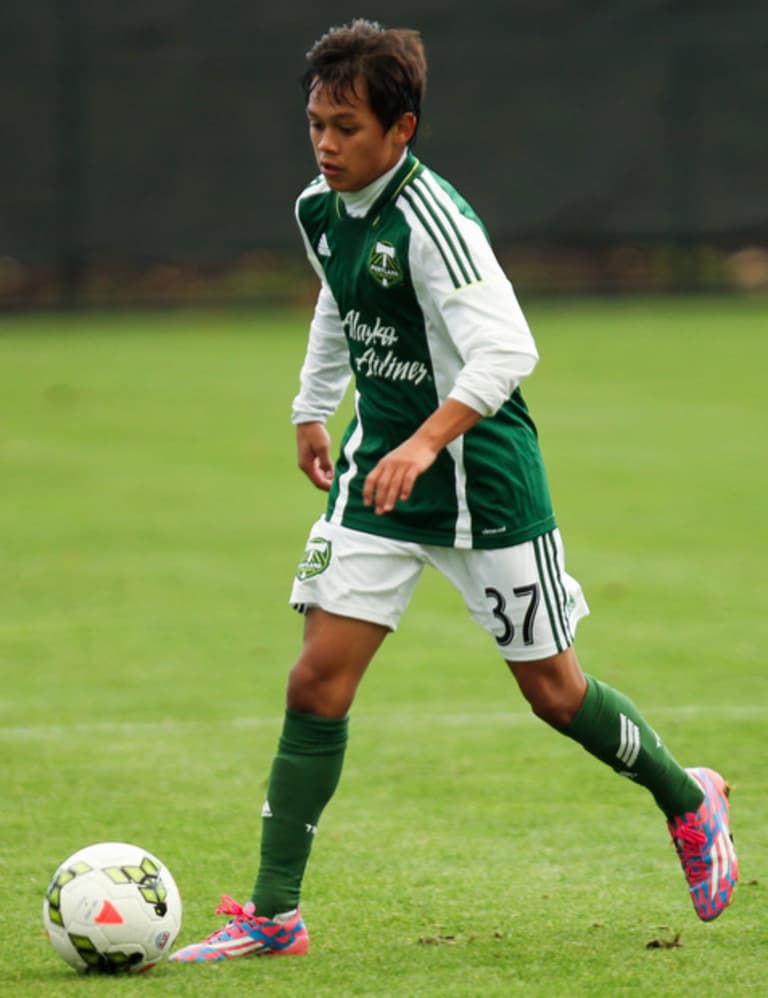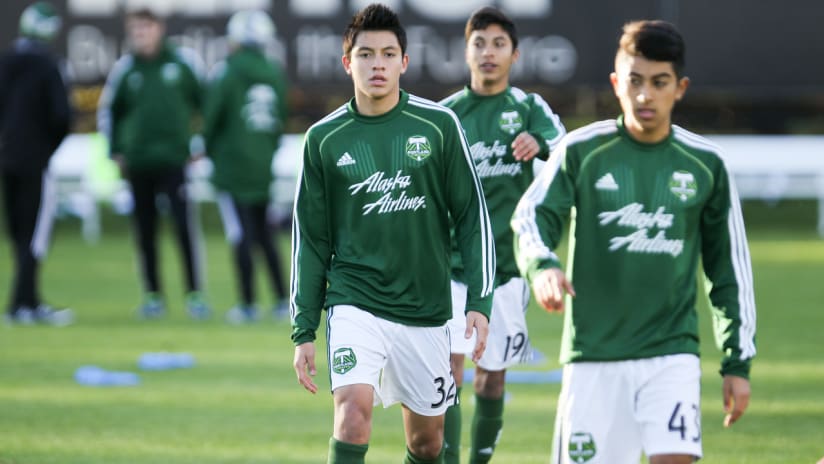Editor's Note: In this special three-part series, Timbers.com explores the growth of the burgeoning Timbers Academy. In Part I, it examines the overall structure of how it is set up and works, Part II takes a look at how it aims to develop players for the first team, and Part III will show what it means to be an Academy player and progress through the club's system.
-----------
PORTLAND, Ore. - Since their arrival in Major League Soccer in 2011, the Portland Timbers have become renowned across the league for their raucous home atmosphere and attractive style of play.
That same year, however, the Timbers also began the construction of an ambitious youth academy with a reach that stretches across the state and region aiming towards finding, developing and producing players for the first team.
Since then, both the Timbers first team and the Timbers Academy have worked hand-in-hand to inspire and develop Oregon's best soccer talents.
"I think the connection that we have with our first team staff is second to none," said Timbers academy director Mike Smith. "What the first team are doing can now be modified and incorporated into everything that the Academy does."

To begin, the Timbers Academy currently has two teams, one each at the U-16 and U-18 levels. Both teams play in the U.S. Development Academy, the top tier of American youth soccer. The Timbers are also in the process of beginning a U-14 team this year as part of an overall new level created by U.S. Soccer and MLS.
Founded by the U.S. Soccer Federation in 2007 as a means of ensuring the highest level of competition for America's top youth players, the U.S. Development Academy is now home to all MLS academy teams, including those of MLS clubs such as the Seattle Sounders FC, San Jose Earthquakes, and Vancouver Whitecaps FC.
The Timbers Academy U-16s and U-18s play each of those teams, as well as other regional independent youth clubs, throughout the course of a nine-month season that stretches from September through May.
But how does the club identify and recruit talent to these teams?
Before taking over the Timbers Academy, Mike Smith had coached at the University of Oregon and Santa Clara University, and was the technical director for the Oregon Youth Soccer Association. While in that position, Smith helped establish regional training centers for the Olympic Development Program (ODP). Now a part of the Timbers' statewide development pyramid, these training centers play a critical role in helping identify and develop young talent for the Timbers Academy.
Currently, there are seven such training centers scattered across the region: Portland West, Portland East, Salem, Bend, Eugene, Medford and Vancouver, Wash. Each training center has one 20-player cohort per age group. For example, there is one cohort of 20 players born in 2002, one for 2003, and so on. This means that Smith and his staff monitor as many as 140 kids from across the region for each age group.
But these regional centers should not be confused with traditional residency academies, where players are housed and trained away from home. Instead, the players at the regional training centers continue to live with their families, go to school with their friends, and play and practice with their home soccer clubs.
What is unique about the Timbers regional setup, though, is that the kids involved get to work with the Timbers coaching staff and play against the brightest talents in their area once a week throughout their club season. During spring break, all seven of the regional training centers convene and the best players in the territory participate in functional training face off in a friendly mini-tournament.
"Even though it's a friendly tournament, we're starting to identify the best kids out of these regions and then we'll put them together on our pre-Academy ODP team," Smith explained. "We'll train the best of the best for May and June, and they'll compete in a few different ODP or pre-Academy events."
This process, Smith says, is the beginning of a journey for these young players, helping them understand how the academy process works, how they can be a part of the Timbers family, and what it will take for them to succeed.

Adrian Villegas
Smith believes that after only a few short years, the Timbers' efforts throughout the region are already bearing fruit. In October, two Timbers Academy U-16 players, Adrian Villegas and Jose Peralta, were called into the U-14 National Team camp and later into the U-15 National Team camp this March.
"I've known [Villegas] for four years now. We discovered him as an 11 year-old in our RTC program," Smith said. "To be able to identify some of the talented players and keep them on the radar for an extended period of time until they get to the academy ages, I think has been tremendously successful."
The regional training center, though, is only the start for the most talented youth players.
Once these players grow older, they'll have the opportunity to play for one of the Timbers' Development Academy clubs. While there are currently two clubs at the U-16 and U-18 level, the new Timbers U-14 club strengthens a platform that Smith described as an "ideal follow through on the regional training centers.
"We're very excited about the U-14 team and having more contact with those best kids at 13 and 14 years old," he said. "It will just pay dividends down the road, because then we will have them in our academy system five or six years as opposed to two or three."
The U-14 team will give more young talents the chance to work with high-level coaches and play with and against other elite players in the territory. This is a critical component of the academy's future but, Smith acknowledges, there's still more work to do.
With MLS extending the Timbers territory to cover Idaho, that provides the Academy its next challenge for branding, scouting, training and recruiting.
"I think the U-14 team stands us in good stead going forward, but we still need to do our homework in finding the right players in our newly extended territory, as well as and going outside the territory [e.g. Alaska, Montana] and recruiting a few top players as well. We're beginning to put plans in place for those things."
As the entire development pyramid grows, so too does the Timbers ability in finding new regional talent. Be on the lookout for Part II next week to learn more how the Timbers Academy trains and develops potential future Timbers players.
Look for Part II next Tuesday as Timbers.com will further explore how Timbers Academy coaches work on player development.













